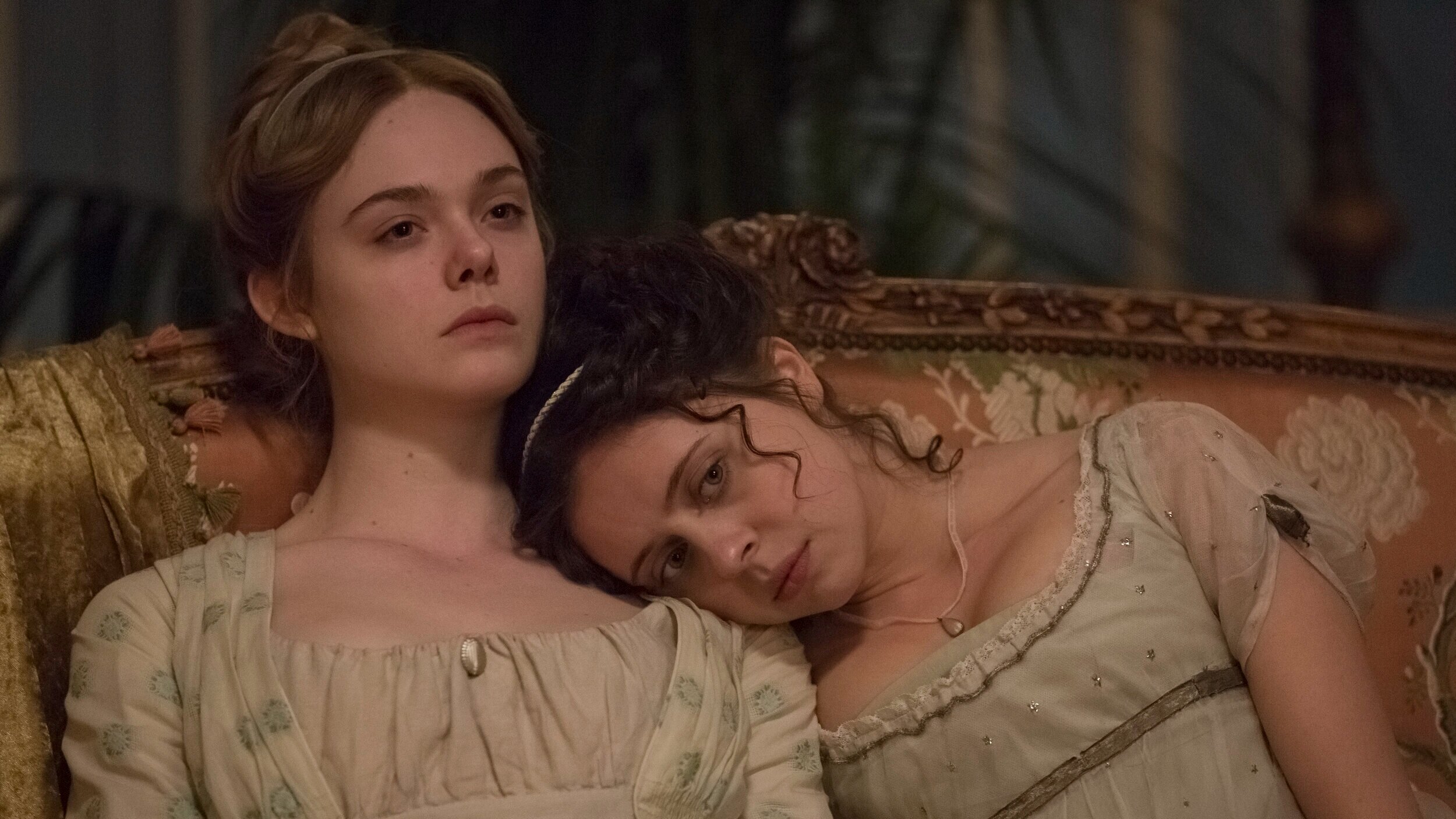Mary Shelley
An English period tale from the 19th century proves unsuited to the talents of Haifaa Al-Mansour.
Elle Fanning and Bel Powley
The 2012 film Wadjda made in her own country, Saudi Arabia, by the writer/director Haifaa Al-Mansour was something special. Not merely a fine work in its own right, its portrayal of a young girl’s life was presented with such understanding and compassion that it left viewers with an intense regard for the filmmaker herself. Consequently, in having to say that her first English language movie, Mary Shelley, does not really work one experiences a sense of genuine sadness. Technically, it is fine (able photography in colour and ‘Scope by David Ungaro and some sharp editing by Alex Mackie) but in other respects - the screenplay being the prime offender - the film is an uneasy affair.
What is clear - and what does in the event provide a link with Wadjda - is that Al-Mansour sees in the author of Frankenstein a woman having to fight to get control of her life and in this case to get a novel published in what is again a male-dominated world. When Ken Russell made Gothic in 1986, he focussed on the summer of 1816 when, accompanied by the poet Shelley, Mary stayed with Lord Byron in a villa on Lake Geneva. That became the place where, encouraged to participate with the others present in response to a challenge to write a novel, she created her classic. The episode is a key part of this new film written by Emma Jensen but, as the title suggests, this time Mary (Elle Fanning) is absolutely central and her whole life is the subject. Thus, among other things, the film encompasses the influence on her of her mother Mary Wollstonecraft notwithstanding that she had died in giving birth and the circumstances of her elopement with Percy Bysshe Shelley (Douglas Booth) with its foreshadowing of that other famous story from the 19th century that spawned on stage and on screen The Barretts of Wimpole Street.
Initially, Mary Shelley is not without promise as it conveys to the audience sympathy for Mary and for her sister, Claire (Bel Powley). Furthermore, Fanning provides an acceptable central presence. But, before long, the dialogue starts to sound like a writer’s creation and Booth’s Shelley comes across in a manner more that of pin up than of poet. Soon the problems get worse: if the two main male characters almost suggest 20th century pop stars, the second of them, Tom Sturridge’s Lord Byron, is played with a touch of punk and quickly becomes totally absurd. The two sides of this story (Mary Shelley’s writing skills on the one hand and her life history on the other) fuse with the suggestion that her Gothic tale and in particular its depiction of the treatment of the monster by his master were the product of her own experiences. This does, however, lead to a ridiculous scene in which she seems to write Frankenstein from start to finish all in one go linked to a montage recalling those experiences. It is the case too that this tale of pain and disillusionment is accompanied most incongruously by a decidedly romanticised music score complete with wordless vocal adornment. As if that were not enough, the film offers at its close two unnecessary short scenes. However, as director Al-Mansour keeps thing moving and with better writing there is no reason to think that she will not enchant us again in the future just as she did in Wadjda.
MANSEL STIMPSON
Cast: Elle Fanning, Douglas Booth, Bel Powley, Ben Hardy, Stephen Dillane, Tom Sturridge, Maisie Williams, Joanna Froggatt, Hugh O'Conor.
Dir Haifaa Al-Mansour, Pro Amy Baer, Alan Moloney and Ruth Coady, Screenplay Emma Jensen with Haifaa Al-Mansour, Ph David Ungaro, Pro Des Paki Smith, Ed Alex Mackie, Music Amelia Warner, Costumes Caroline Koener.
Hanway Films/BFI/Juliette Films/A Parallel Films and Gidden Media production/Sobini Films-Curzon Artificial Eye.
121 mins. Ireland/Luxembourg/UK/USA/Australia. 2017. Rel: 6 July 2018. Cert. 12A.


